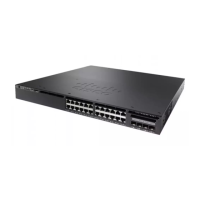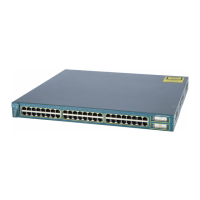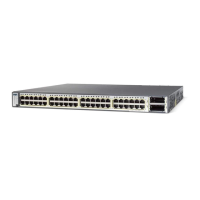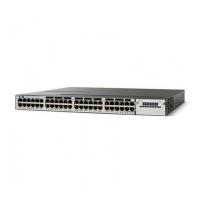for i(M)BGP peers is to not update the next-hop address, the peer cannot rely on the next-hop address to
describe the (M)BGP topology (MSDP topology). Instead, the i(M)BGP peer uses the address of the i(M)BGP
peer that sent the path to describe the i(M)BGP topology (MSDP topology) inside the autonomous system.
Care should be taken when configuring the MSDP peer addresses to make sure that the same address is
used for both i(M)BGP and MSDP peer addresses.
Tip
Rule 2 of RPF Checking of SA Messages in MSDP
Rule 2 of RPF checking in MSDP is applied when the sending MSDP peer is also an e(M)BGP peer. When
Rule 2 is applied, the RPF check proceeds as follows:
1
The peer searches the BGP MRIB for the best path to the RP that originated the SA message. If a path is
not found in the MRIB, the peer then searches the URIB. If a path is still not found, the RPF check fails.
2
If the previous search succeeds (that is, the best path is found), the peer then examines the path. If the first
autonomous system in the best path to the RP is the same as the autonomous system of the e(M)BGP peer
(which is also the sending MSDP peer), then the RPF check succeeds; otherwise it fails.
Implications of Rule 2 of RPF Checking on MSDP
The MSDP topology must mirror the (M)BGP topology. In general, wherever there is an e(M)BGP peer
connection between two devices, an MSDP peer connection should be configured. As opposed to Rule 1, the
IP address of the far-end MSDP peer connection does not have to be the same as the far-end e(M)BGP peer
connection.The reason that the addresses do not have to be identical is that BGP topology between two
e(M)BGP peers is not described by the AS path.
Rule 3 of RPF Checking of SA Messages in MSDP
Rule 3 of RPF checking is applied when the sending MSDP peer is not a (M)BGP peer at all. When Rule 3
is applied, the RPF check proceeds as follows:
1
The peer searches the BGP MRIB for the best path to the RP that originated the SA message. If a path is
not found in the MRIB, the peer then searches the URIB. If a path is still not found, the RPF check fails.
2
If the previous search succeeds (that is, the best path to the RP that originated the SA message is found),
the peer then searches the BGP MRIB for the best path to the MSDP peer that sent the SA message. If a
path is not found in the MRIB, the peer then searches the URIB. If a path is still not found, the RPF check
fails.
The autonomous system of the MSDP peer that sent the SA is the origin autonomous system, which is
the last autonomous system in the AS path to the MSDP peer.
Note
1
If the first autonomous system in the best path to the RP is the same as the autonomous system of the
sending MSDP peer, then the RPF check succeeds; otherwise it fails.
IP Multicast Routing Configuration Guide, Cisco IOS XE Release 3SE (Catalyst 3650 Switches)
176 OL-29890-01
Configuring MSDP
SA Message Origination Receipt and Processing

